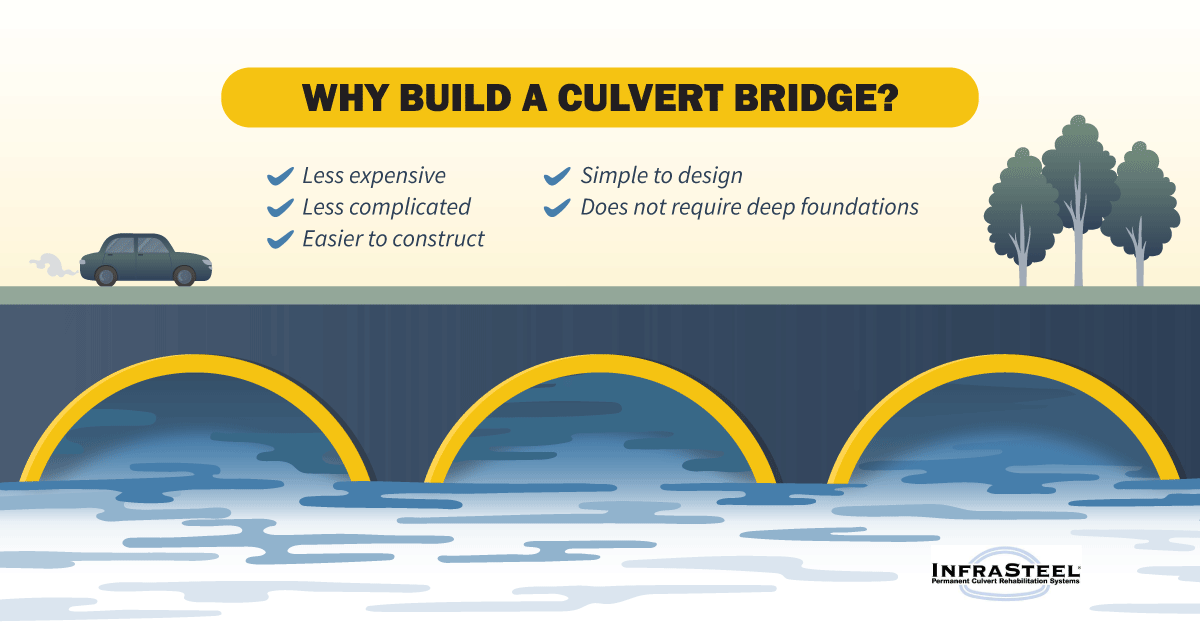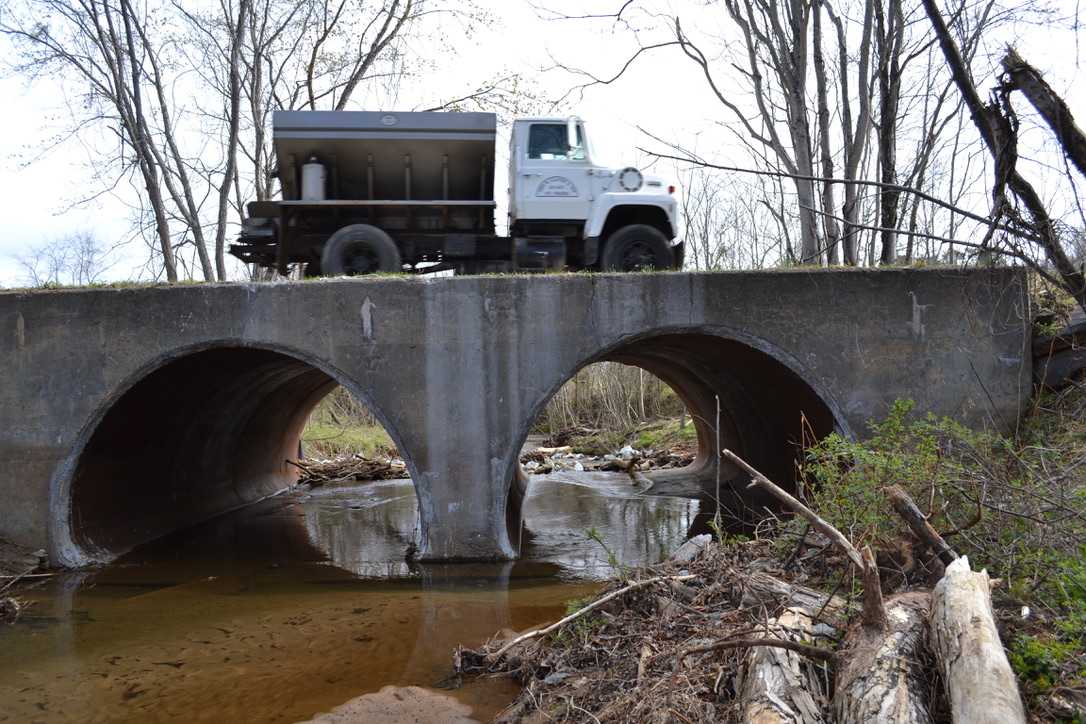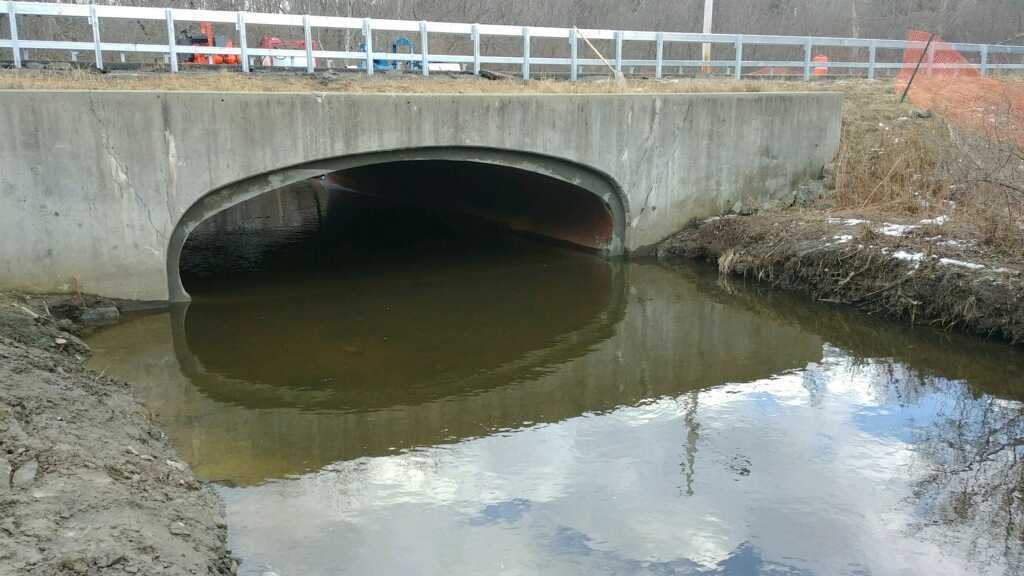WHAT IS A CULVERT BRIDGE
Most people don’t think of a culvert as a bridge. When talking about bridges, we think of suspension bridges and arch bridges that allow water to flow freely under them as they allow traffic to traverse over them. In contrast, the traveling public doesn’t usually see culverts, even though creeks and streams flow under them and vehicles and trains pass over them.
So, it may seem surprising that for roadways, the difference between a culvert and a bridge is only 1″. The American Association of Highway Transportation Officials (ASHTO) and the Federal Highway Administration (FHWA) define a bridge as any structure with a span of over 20′. If the span is 20′ or less, it’s a culvert.
For new construction, concrete box culvert bridges and corrugated metal plate structures may be engineered to handle the load-bearing requirements of a 20′ or more designed span. However, a grouping of medium-sized culvert pipes used to convey the same body of water, which have a combined total span of more than 20′, are considered culvert bridges.
WHY BUILD A CULVERT BRIDGE?
Culvert bridges are typically less expensive, less complicated, and easier to construct than conventional bridges. The individual culvert structures are designed so that the material around and between them bear a significant amount of the weight of the roadway, railway, and the vehicles using it.
The components of a culvert bridge are simple and typically consist of round, arched, and elliptical pipes or boxes. In contrast to bridges over deep water with wide spans, bridge and culvert combinations do not require deep foundations. Usually, the individual culverts that compose a culvert bridge are positioned near the bottom of the streambed.
Read more about InfraSteel Pipe ‘n Fill Bridge Kits.
HOW DO YOU DESIGN A CULVERT BRIDGE?
A culvert bridge may be composed of corrugated metal, concrete, steel, or polyethylene culvert materials of various shapes and sizes. Some project owners may require significantly more design work than others.
Project owners such as the Department of Transportations may require that culvert bridges be designed by bridge design engineers and require the hydraulic calculations and load-bearing calculations used for much wider conventional bridge designs.
Other project owners may streamline the designing of culvert pipe bridges, simply placing the culvert pipes into position on solid foundations, and then covering them up with concrete, fills, or ballast, and then allowing traffic to travel over them.
HOW DO YOU REPAIR OR REHABILITATE A CULVERT BRIDGE?
When culvert bridges are destroyed by flooding or mudslides, they’re usually rebuilt using materials similar to their original design. At Precision Pipe & Products, we often get calls from our customers, after extreme weather events, requesting large diameter pipe to replace the culvert bridge material. When a railway is inoperable due to a culvert bridge failure, it may cost the rail operator a significant loss of revenue each day, so it’s important to replace them as quickly as possible.
It is also important to regularly inspect the culverts to ensure that they have maintained their structural integrity. A common source of culvert bridge failure is when corrugated metal pipe culverts reach the end of their life expectancy and begin to fail due to corrosion and scour. When concrete box culverts fail, scouring of the bottom and joint separation is often the source.
The best way to ensure the continued structural integrity of the culvert barrels while maintaining traffic flow is to slip line the structures with a matching shape that offers the largest hydraulic area possible and use a liner that will provide the structural integrity to meet the load-bearing requirements of the owner. Once the liners are placed inside the existing barrels, the annular space between the liner and the existing barrels is grouted to hold the liners in position and maintain structural integrity.
Read more on culvert repair and rehabilitation.
THE INFRASTEEL SOLUTIONS
At Precision Pipe & Products, we developed InfraSteel to rehabilitate single barrel failing culverts and multi-barreled culvert bridges. We provide liners that match the exact shape of the existing structures with thicknesses from ½” up to 2” to meet the load-bearing requirements of our project owners. We also offer InfraSteel products used to repair failing timber bridges, offering solutions that provide long life expectancies. Please go to infrasteel.com to learn more about the InfraSteel solutions.







Leave A Reply